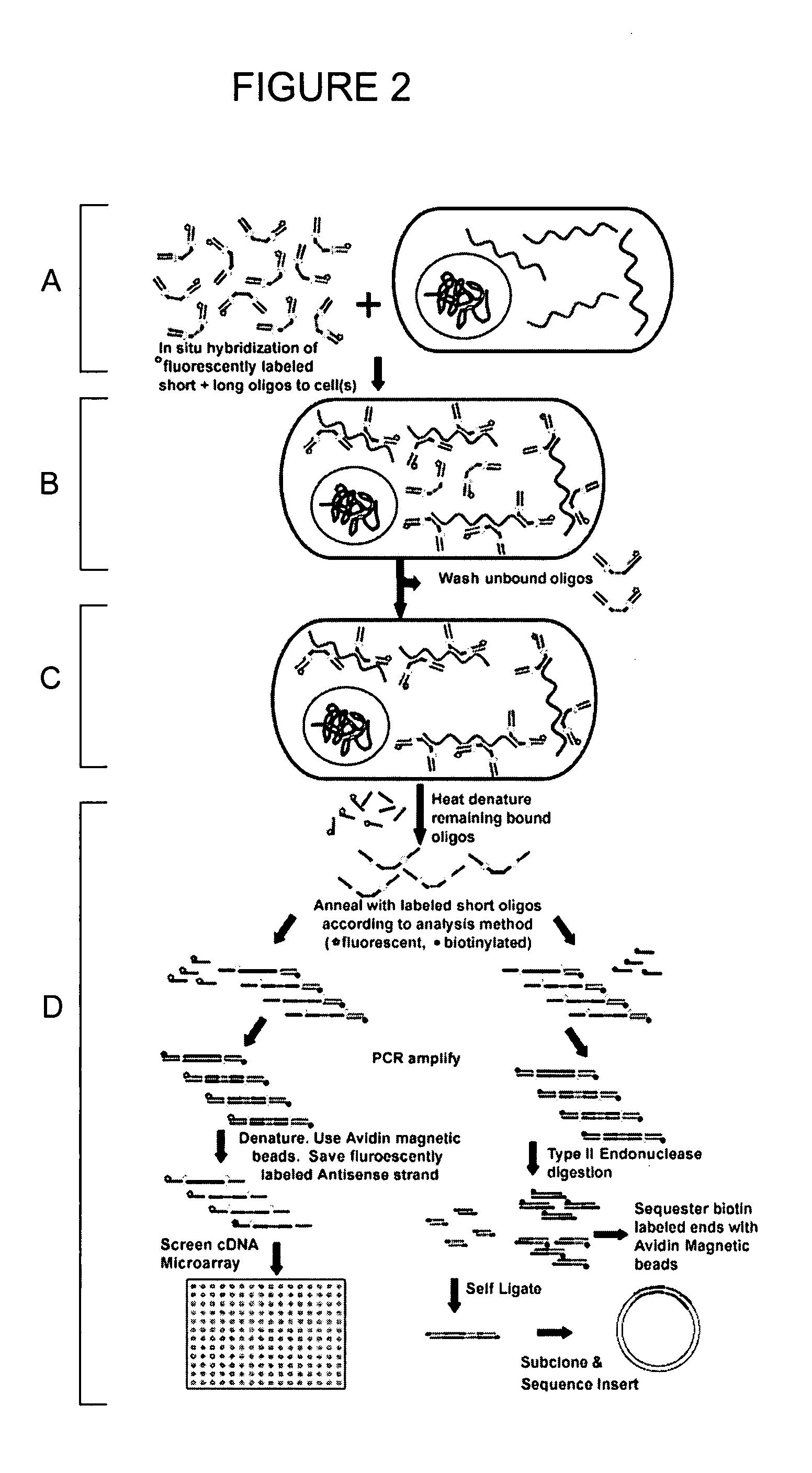In situ cloning from pathological tissue specimens
- Summary
- Abstract
- Description
- Claims
- Application Information
AI Technical Summary
Benefits of technology
Problems solved by technology
Method used
Image
Examples
experimental examples
[0145]The invention is further described in detail by reference to the following experimental examples. These examples are provided for purposes of illustration only, and are not intended to be limiting unless otherwise specified. Thus, the invention should in no way be construed as being limited to the following examples, but rather, should be construed to encompass any and all variations which become evident as a result of the teaching provided herein.
example 1
Hybridization of Population of Oligonucleotide Sequence Probes Comprising Degenerate Sequence Tags to Fixed Sample
[0146]A 100 base pair oligonucleotide sequence probe was synthesized by a commercial vendor (Sigma-Genosys). The oligonucleotide sequence probe comprised a 20 base pair degenerate sequence as its sequence tag, located approximately in the middle of the probe and flanked by 5′-end and 3′ end extension sequences, arranged as depicted in FIG. 1. A BLAST search confirmed that the 5′-end and 3′-end extension sequences flanking the sequence tag are not found in the mammalian genome. Each extension sequence comprised a FokI site.
[0147]Two short, fluorescently-labeled oligonucleotides, complementary to detection sequences at the ends of the oligonucleotide sequence probe, were hybridized to the oligonucleotide sequence probe. The population of oligonucleotide sequence probes, each having double-stranded ends and a single-stranded middle section comprising the degenerate sequence...
example 2
Amplification, Subcloning and Sequencing of Hybridized Oligonucleotide Sequence Probes
[0150]The PACES procedure allows for at least two modes of characterizing the oligonucleotide sequence probes hybridized to nucleic acids in cells: 1) direct hybridization of eluted oligonucleotide sequence probes to a cDNA microarray and 2) a sequencing strategy in which the sequence tags are released from the population of hybridized oligonucleotide sequence probes by digestion with a type II restriction endonuclease and subcloning the released fragments. This example is drawn to the latter mode of characterization.
[0151]A 100 base pair oligonucleotide sequence probe having a 20 nucleotide degenerate sequence tag was synthesized. The probe comprised a Fok I site in each end extension sequence. The probe was designed such that when digested with Fok I, a 28 base pair fragment would be released in which the 20 base pair sequence tag was flanked by 6 base pairs upstream (5′) and 2 base pairs downstr...
PUM
| Property | Measurement | Unit |
|---|---|---|
| Fraction | aaaaa | aaaaa |
| Biological properties | aaaaa | aaaaa |
| Strength | aaaaa | aaaaa |
Abstract
Description
Claims
Application Information
 Login to View More
Login to View More - R&D Engineer
- R&D Manager
- IP Professional
- Industry Leading Data Capabilities
- Powerful AI technology
- Patent DNA Extraction
Browse by: Latest US Patents, China's latest patents, Technical Efficacy Thesaurus, Application Domain, Technology Topic, Popular Technical Reports.
© 2024 PatSnap. All rights reserved.Legal|Privacy policy|Modern Slavery Act Transparency Statement|Sitemap|About US| Contact US: help@patsnap.com










